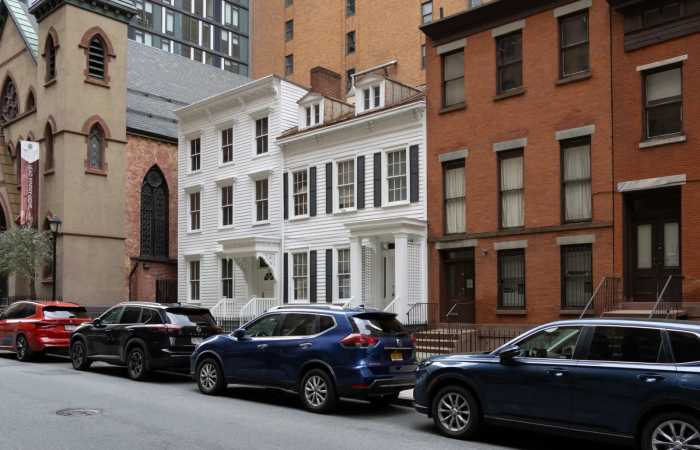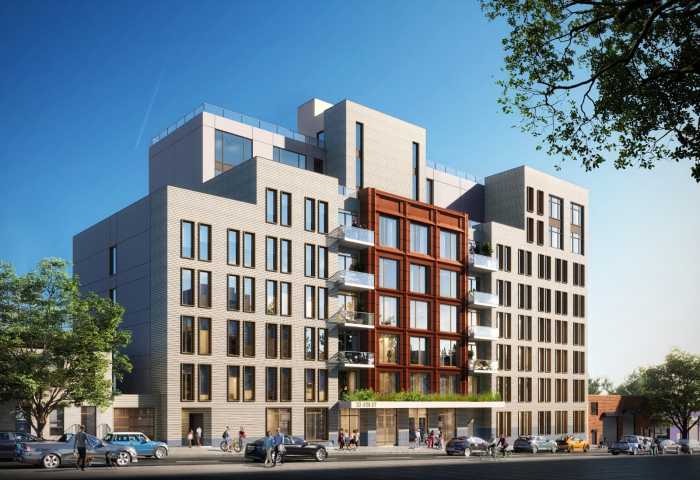Three conjoined buildings at the dormant Domino Sugar factor on the Williamsburg waterfront have been declared city landmarks, though the status does not affect the plant’s beloved sign, which has the misfortune of hanging on a less aesthetically significant, 1960s-era building.
Tuesday’s unanimous ruling by the Landmarks Preservation Commission has little practical value, as the three structures — the Filter, Pan and Finishing houses — are slated to be preserved as part of a $1.5-billion redevelopment of the site by Community Preservation Corporation.
The company’s President and CEO Michael Lappin hailed the ruling as “an important first step toward the creation of a new waterfront development that is tied into the existing Williamsburg community.”
Lappin plans to transform the 11-acre site, which is bounded by the East River, Wythe Avenue, South Fifth and Grand streets, into a multi-use complex with nine new towers containing 2,400 units of housing. Thirty percent (or 660) of the units would be so-called affordable rentals, 100 units for families earning up to $21,000 a year, 330 for families earning up to $42,000, and another 100 rentals for low-income seniors. The remaining 130 units would be sold to families earning up to $90,000.
The project would also include a public waterfront esplanade, a floating dock for a water taxi, about four acres of public open space, and a “community facility,” Lappin said.
“We look forward to transforming a site that has been walled off for 100 years into a showpiece of affordable housing and park-like waterfront access for all,” he added on Tuesday.
Lappin also said that the landmark designation would “add significant cost to our development budget.”
The three landmarked buildings date back to 1884, and comprise the factory’s original refinery, which produced three million pounds of sugar each day during its peak.
Some preservationists called for the city to preserve an additional 19th-century building on the site, the Adant House, but it was ultimately rejected because it was not as aesthetically important and not in good enough shape to save.
“The refinery is the oldest, intact structure on the site and the most iconic symbol of Brooklyn’s industrial heritage on the waterfront,” said Commission Chairman Robert B. Tierney.
Sugar manufacturing was the most important industry in Brooklyn in the late 19th and early 20th centuries. But everything from cheaper labor to the diet craze conspired to end sugar’s run in Brooklyn.
The refinery closed in 2004 and was bought by Lappin’s group, which has long intended to use the three rounded-window, Romanesque Revival structures as an iconic centerpiece to the much-larger project.
A spokesman for Lappin said the developer is looking at several ways to preserve the famous sign, but hasn’t figured out how to do it yet.
“It’s not affixed to one of the designated buildings, but he is trying,” said the spokesman, Richard Edmonds.
























